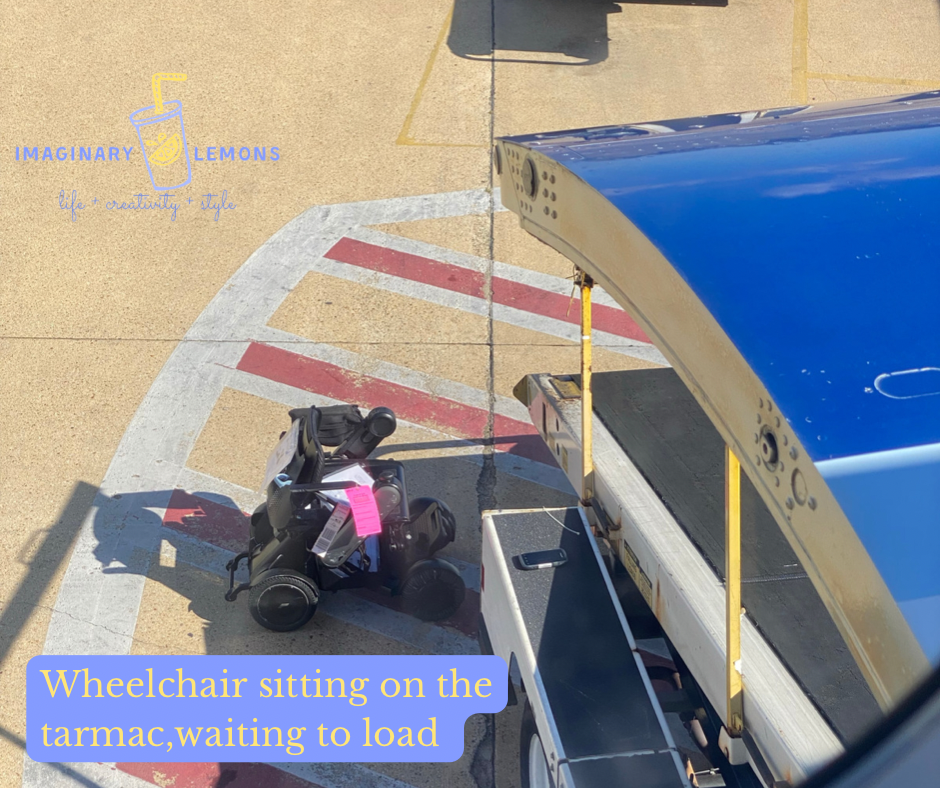You have booked your trip, paid for it and are ready to go. Wait, have you prepped your chair for travel? Have you printed the airline wheelchair form. “Wait, what form are you talking about Aadam?” The one that has you chair info. Each Airline has a form which you should fill out that has chair info. I dropped the links below. Your wheelchair manufacture’s may also have a handout you can bring for the flight crew. When we travel, we bring both.
If its possible where you live, I strongly recommend you pick a regular airline for your travel. This way you build a profile with them, and get to know their policies really well. You will also be able to add specific information to your profile, such as your known traveler number (KTN) — more on that in an upcoming post.
Before you board the plane
As you fill out the form for the airline, make sure have correct info. I know we all have different chairs but they need the basic info on them. With JetBlue they want model, weight, how to put in “free wheel” mode. Now that you have filled out the form and have it ready to go print out two or three copies for it. Have them with you when you travel to the airport as you may want to give them to the gate agent and the ground crew.
After you arrive at the airport, go through security and finally get to the gate, line up to see the gate agent as soon as possible. They will likely tag your chair and ask the same questions on the form — and you can just hand them the form rather than repeating all the information. When you talk to the gate agent, we recommend that you ask to see the ground crew as they will be handling your chair once you do a transfer. This way you can let them know of any of your concerns and/or special requirements for your chair. Most times if you have gotten there early and the plane is ready the ground crew lead will come to the front desk. I have had them meet us at the plane door also.
Because you have talked to the gate agent and let them know about your needs, you will likely get to board first — before everyone, including the family with young kids. This is to give you time to settle down.
Getting on the plane
When it is time to board, you can take your own chair down the gangway to the airplane door. In most cases, you will need to transfer to an aisle chair. For those who don’t know, this is a very narrow chair they use to get you to your seat. You transfer at the pane door, they strap you down and get you to your seat. The crew members that bring the aisle chair will ask you about your ability to transfer, and whether you need assistance. I can stand and pivot to transfer, but if you need it they will have people pick you up and put you into the aisle chair. Before you get on the plane, you should remove any items from your wheelchair that you know are easily removable. This way they will not get broken or lost as they transfer it. You can also keep your seat cushion, and use it for the flight.
Now you will board the plane, settle in, and get to watch all the other people board. You also get dibs on as many overhead bins as you need.
Getting off the plane
Now you have had a good flight, the plane landed and is at the gate. It’s time to wait for isle chair again. Once everyone has gotten off, your chair is (hopefully) ready outside of the plane door. They will bring the aisle chair, and you will do everything again in reverse.
You had a great trip, now just do it again for the trip back.
American Airlines
https://www.aa.com/contact/forms?topic=DA#/topics/DA/RQST_ASSTNC
Delta airlines
https://www.delta.com/content/dam/delta-www/pdfs/mobility-handling-form-no-proof.pdf
JetBlue Airline
https://www.jetblue.com/magnoliapublic/dam/ui-assets/p/wheelchair-information.pdf
Southwest airlines
https://www.southwest.com/assets/pdfs/customer_service/Wheelchair-Mobility-Aid-Info-Form.pdf
United Airlines

